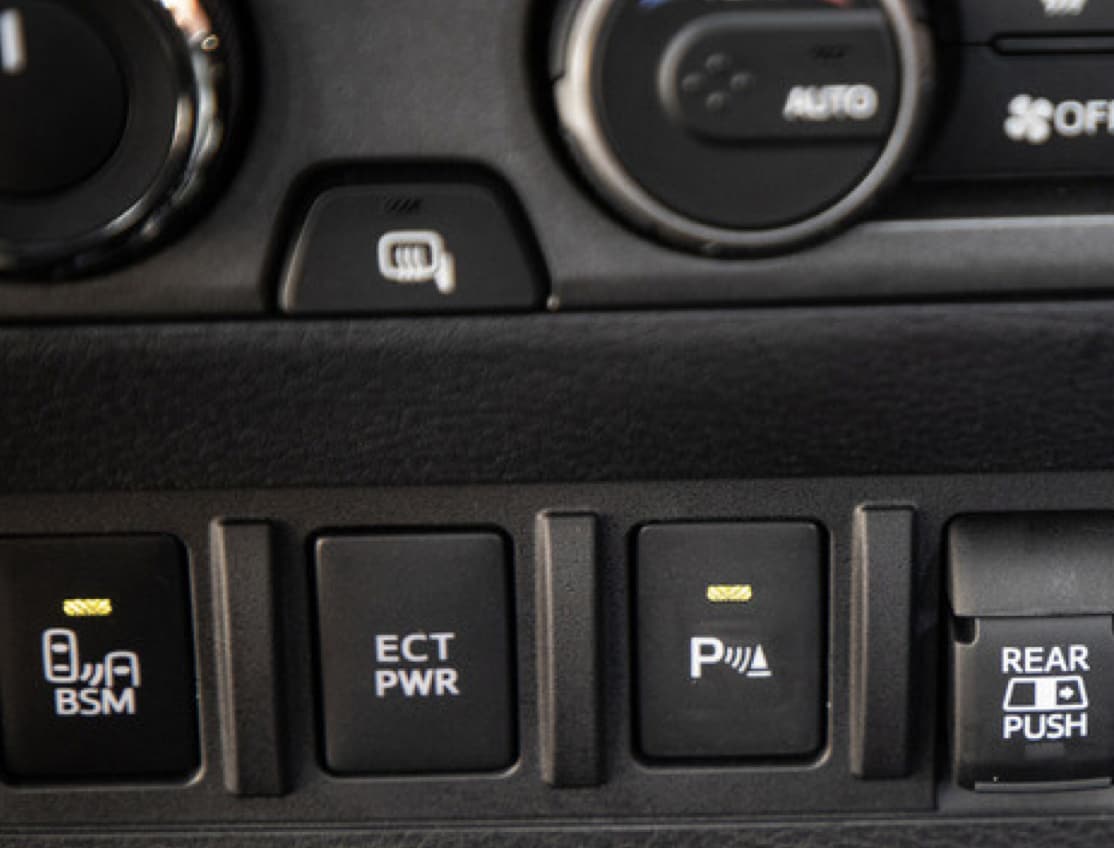

ECT PWR stands for Electronically Controlled Transmission Power. This system has been a part of Toyota's engineering since 1981, first appearing on the Toyota Crown Royal Saloon in Japan. Toyota marketed it as the world's first micro-computer-controlled automatic transmission, giving drivers the ability to choose between Normal, Eco, and Power shifting patterns.
Today, the core principle remains the same. When you press the ECT PWR button, you're telling your vehicle's transmission to adjust its shift points to prioritize power over fuel efficiency.
Engaging the ECT PWR mode alters the behavior of your automatic transmission. Here’s a simple breakdown of what happens:
- Holds Gears Longer: The system allows the engine to rev higher before shifting up to the next gear.
- Downshifts More Readily: The transmission becomes more eager to downshift when you press the accelerator, providing quicker access to more power.
Let's look at the third-generation Toyota Tacoma as an example. The 2023 model, equipped with the 3.5-liter V6 engine, produces 278 horsepower and 265 pound-feet of torque. This gives it a maximum towing capacity of 6,800 pounds when properly equipped. While capable, situations like pulling a heavy trailer or climbing a steep hill demand maximum output. This is where ECT PWR shines.
By holding a lower gear for longer, the engine operates in a more powerful part of its rev range. Generally, an engine produces more torque when it's in a lower gear. By delaying the upshift, the ECT PWR mode keeps the engine in this optimal power band, delivering a noticeable boost in acceleration and pulling power.
The ECT PWR mode is designed for specific situations where you need an extra burst of power or more responsive acceleration. It's not intended for everyday driving, as it will decrease your fuel economy.
Here are the best times to use it:
- Towing or Hauling: When pulling a heavy trailer or carrying a significant load in the bed of your truck, ECT PWR helps the vehicle get up to speed more easily and maintain momentum on hills.
- Driving in Hilly or Mountainous Areas: The mode prevents the transmission from "hunting" for the right gear on steep inclines and provides more engine braking on descents.
- Merging onto the Highway: Need to get up to speed quickly to merge with fast-moving traffic? The ECT PWR button gives you the immediate acceleration you need.
- Overtaking Other Vehicles: The quicker downshifts and extended power band make passing slower cars on two-lane roads safer and more efficient.
You generally don't need to use the ECT PWR button for regular city or highway cruising, as your vehicle's standard transmission mapping is optimized for a balance of performance and fuel efficiency. The ECT PWR button is a valuable tool that gives you on-demand access to your Toyota's full performance potential. By adjusting your transmission's shift logic, it delivers the extra power and responsiveness needed for demanding driving situations. While it comes at the cost of fuel economy, knowing when and how to use this feature can make your driving experience safer, easier, and more enjoyable. Next time you face a steep hill or a short highway on-ramp, give that button a press and feel the difference.
Source: Jalopnik